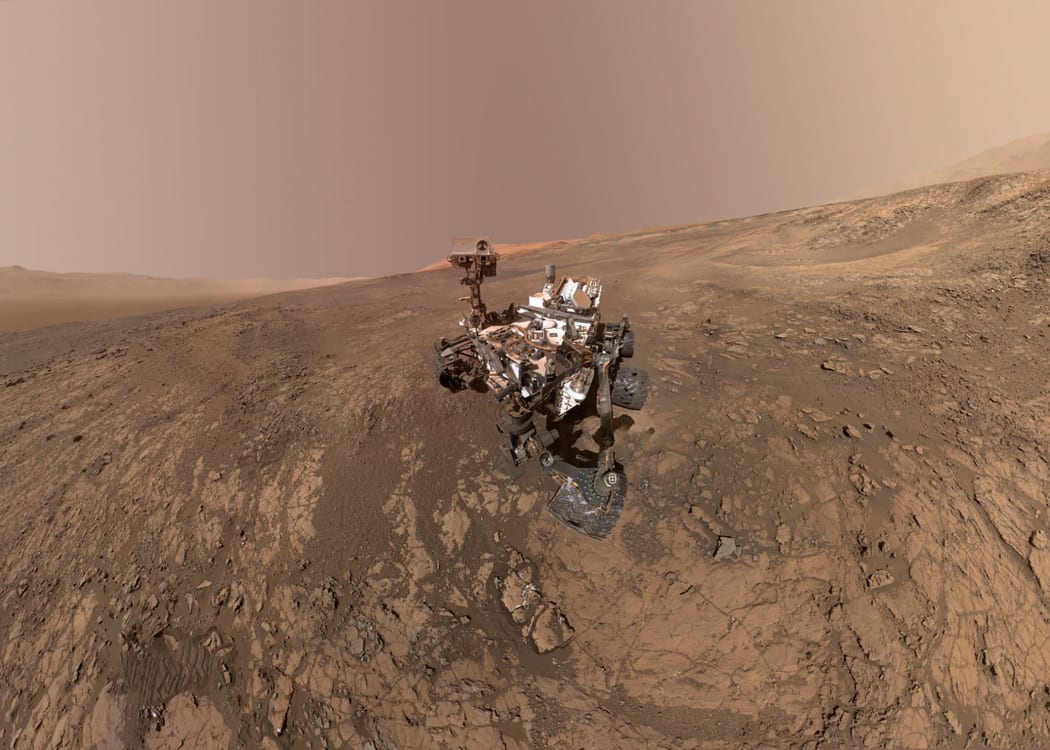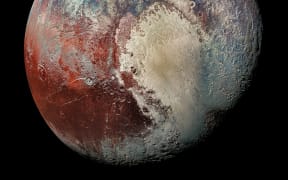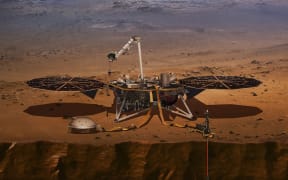A Nasa rover has detected a bonanza of organic compounds on the surface of the planet and seasonal fluctuations of atmospheric methane, in findings that mark some of the strongest evidence ever that Earth's neighbour may have harboured life.
But National Aeronautics and Space Administration scientists emphasised there could be nonbiological explanations for both discoveries made by the Curiosity rover at a site called Gale crater.

The Curiosity Mars rover on Vera Rubin Ridge. Gale Crater's rim is visible on the horizon. Photo: AFP / NASA/JPL-Caltech/MSSS/HANDOUT"
Auckland University astrobiologist Kathleen Campbell, who formerly worked at Nasa, said it was the first time the building blocks of life had been shown "for sure" to be on the planet.
"It's not that they haven't found a bit of organic matter before or even the methane in the atmosphere ... it's that they've now definitively shown this to be the case.
"People have been wondering about whether there might be life on Mars forever and finally … they've done all the tests they've modified everything to be able to show that in fact there's organic matter on Mars."
Three different types of organic molecules were discovered when the rover dug just 5 cm into roughly 3.5 billion-year-old mudstone, a fine-grained sedimentary rock, at Gale crater, apparently the site of a large lake when ancient Mars was warmer and wetter than the desolate planet it is today.
Curiosity also measured an unexpectedly large seasonal cycle in the low levels of atmospheric methane. About 95 percent of the methane in Earth's atmosphere is produced from biological activity, though the scientists said it is too soon to know if the Martian methane also is related to life.
Organic molecules are the building blocks of life, though they can also be produced by chemical reactions unrelated to life. The scientists said it is premature to know whether or not the compounds were created in biological processes.
Nasa administrator Jim Brindenstine tweeted the agency was "sending the Mars 2020 rover to dig deeper"
#BREAKING @NASA news! @MarsCuriosity rover found organic molecules on Mars! While this doesn’t mean that we’ve found concrete evidence of life on Mars, it is a good sign in our continuing search. We’re sending the Mars 2020 rover to dig deeper! https://t.co/sU0wYlkZSu
— Jim Bridenstine (@JimBridenstine) June 7, 2018
Whether anywhere other than Earth has harboured life, perhaps even in microbial form, is one of the paramount questions in science.
"There's three possible sources for the organic material," said astrobiologist Jennifer Eigenbrode of Nasa's Goddard Space Flight Center in Maryland. "The first one would be life, which we don't know about. The second would be meteorites. And the last one is geological processes, meaning the rock-forming processes themselves."
Ms Campbell said if life did produce the organic molecules it was on the "simpler end of the scale".
The rover, which has allowed scientists to explore whether Mars ever boasted conditions conducive to life, in 2014 made the first definitive detection of organic molecules, also in Gale crater rock formed from ancient lake sediment - but it was a much more limited set of compounds.
- RNZ / Reuters





